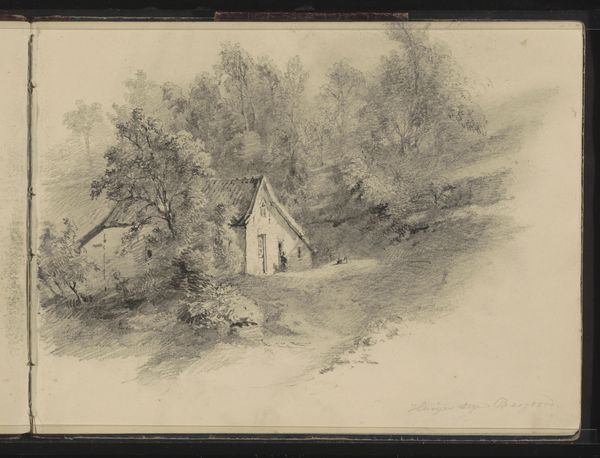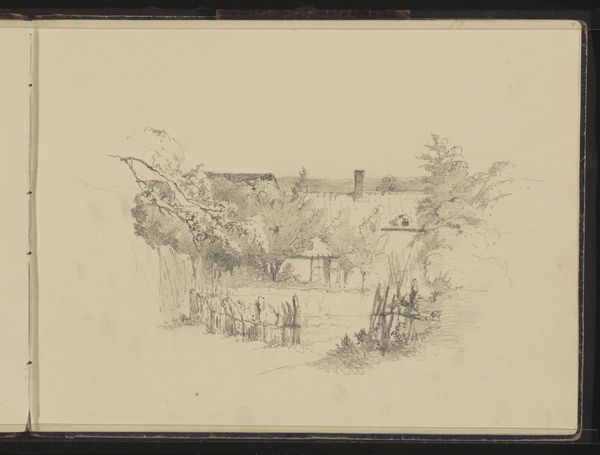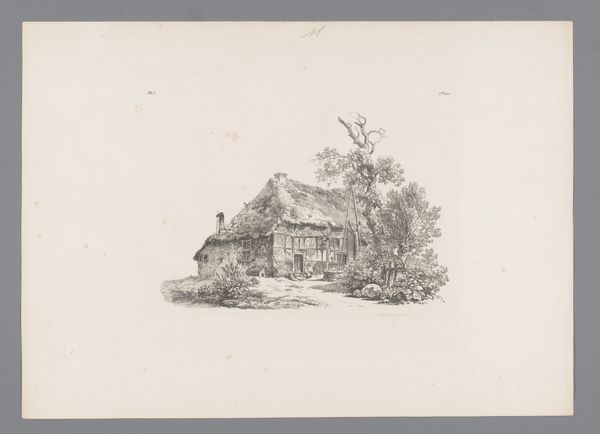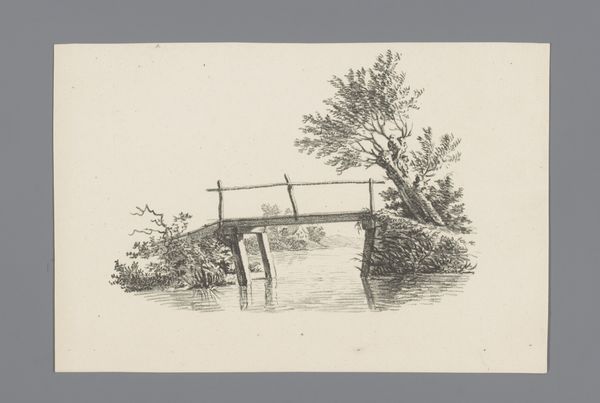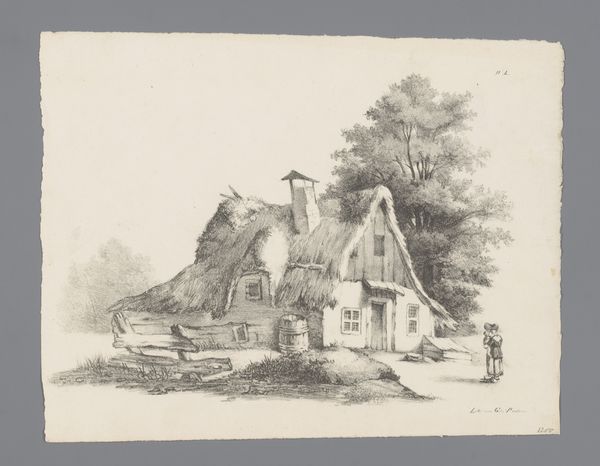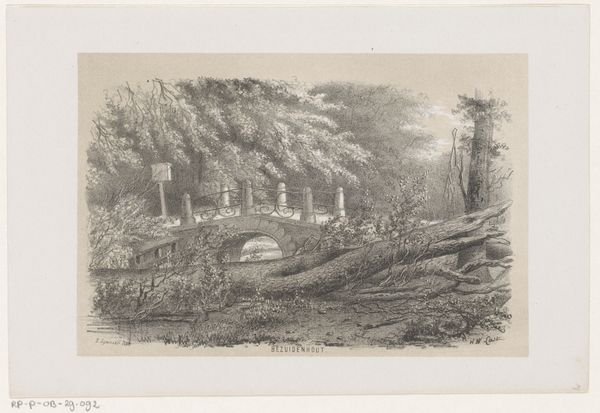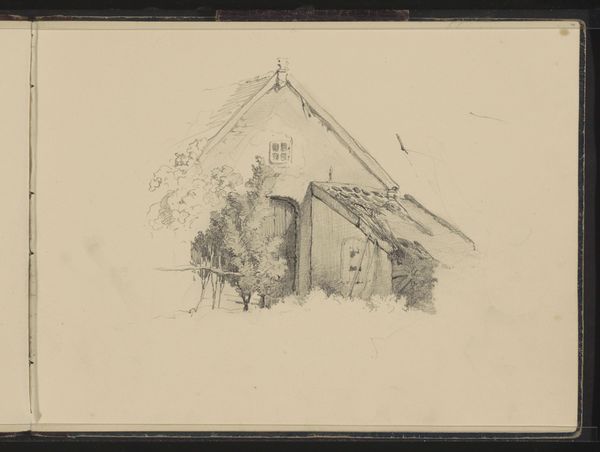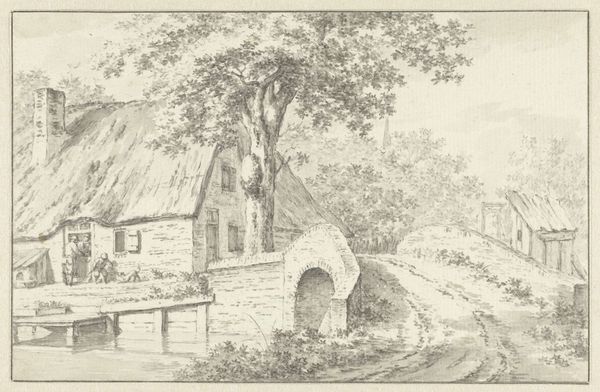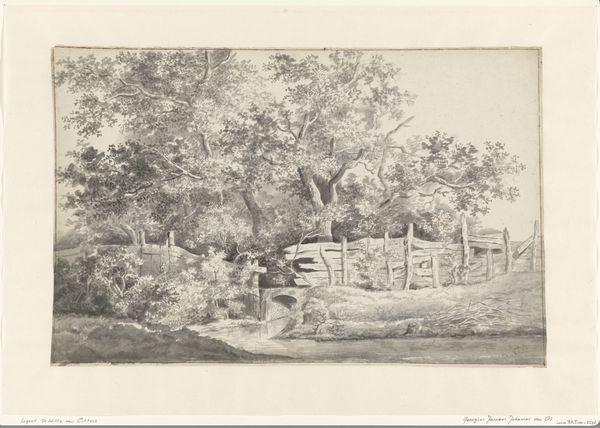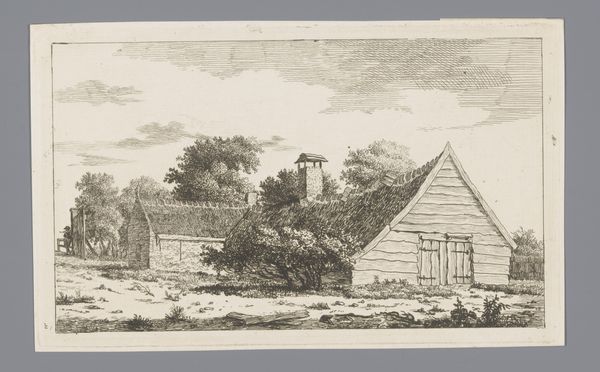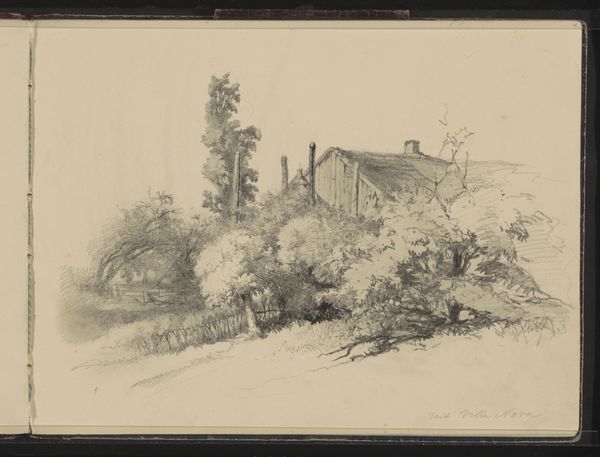
drawing, paper, pencil
#
drawing
#
dutch-golden-age
#
landscape
#
paper
#
pencil
#
realism
Dimensions: height 220 mm, width 275 mm
Copyright: Rijks Museum: Open Domain
Curator: Let's discuss this subtle drawing, "Landscape with bridge, fisherman and barn," by Cornelis de Kruyff, created before 1828. It's currently held at the Rijksmuseum. What strikes you first? Editor: Its tranquility, definitely. The composition is very deliberate, a perfect balance between the architectural structure of the bridge and the rustic charm of the barn. There's a clear harmony, almost a visual rhyme, between these two man-made elements. Curator: Absolutely. The materials are simple: pencil on paper. It’s a medium accessible to many, and the very act of choosing such readily available materials situates the work within the landscape of artistic production and accessibility. One wonders, looking at the fisherman, about the socioeconomic dynamics at play in representing rural life in the Netherlands at this time. Was this accessible for only specific patrons? Editor: I am more attracted to how De Kruyff used the pencil. Look at the way he created a complex tonal range by merely altering the pressure and direction of his strokes. The reflections in the water, for instance – they’re suggested with just the faintest of marks, yet they completely convince us of their reality. It creates an impressive optical illusion. Curator: What's interesting to me is considering this piece in relation to the rise of landscape art in the Dutch Golden Age and even before. Artists and the elites, eager to secure them, began valorizing and representing the working class who inhabited those environments in idealized contexts. The simple labor shown is ennobled, perhaps obscuring the true realities of agricultural work at the time. Editor: That's a compelling reading, particularly concerning its date. For me, though, it’s also about the artist's mastery in rendering form and space. The linearity of the bridge against the soft foliage of the trees; the light reflecting. Curator: Indeed, that interplay certainly draws the eye. It leaves one pondering what value De Kruyff's audiences held for landscapes with farmers and their relationship to those artworks as objects. Editor: And, ultimately, how well De Kruyff invites us into the scene as viewers today.
Comments
No comments
Be the first to comment and join the conversation on the ultimate creative platform.
